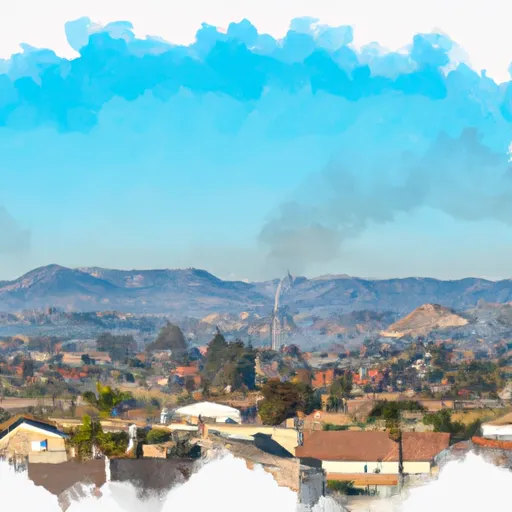-
 Snoflo Premium
Snoflo Premium
Get unlimited access to all our content
With no Ad interruptions! - Start Your Free Trial Login with existing account
Ranchita
Eden Index
Climate
9.2
•
Recreation
3.4
•
Community
•
Safeguard
4.8/10

Ranchita is a small, unincorporated community located in San Diego County, California. Situated in the northeastern part of the county, Ranchita is known for its picturesque desert landscapes and tranquil atmosphere. The climate in Ranchita is classified as a semi-arid desert climate, characterized by hot summers and mild winters. Summers can be scorching with temperatures often exceeding 100°F, while winters are generally mild with temperatures dropping to around 30-40°F at night.
The hydrology constituents in Ranchita mainly consist of dry washes and seasonal streams that flow during the occasional rainfall events. Due to the arid nature of the region, water resources are limited, and water conservation is of utmost importance.
Outdoor recreation opportunities in Ranchita are abundant. The area is a haven for nature enthusiasts, offering opportunities for hiking, biking, and bird watching. Nearby parks and protected areas such as Anza-Borrego Desert State Park provide additional opportunities for camping, stargazing, and exploring the unique desert flora and fauna. Ranchita also boasts stunning views of the surrounding mountains and valleys, making it an ideal destination for those seeking tranquility and natural beauty.
What is the Eden Index?
The Snoflo Eden Index serves as a comprehensive rating system for regions, evaluating their desirability through a holistic assessment of climate health, outdoor recreation opportunities, and natural disaster risk, acknowledging the profound impact of these factors on livability and well-being.
Climate Health Indicator (CHI): 9.2
Ranchita receives approximately
431mm of rain per year,
with humidity levels near 74%
and air temperatures averaging around
14°C.
Ranchita has a plant hardyness factor of
8, meaning
plants and agriculture in this region tend to thrive here all year round.
By considering the ideal temperature range, reliable water supplies, clean air, and stable seasonal rain or snowpacks, the Climate Health Indicator (CHI) underscores the significance of a healthy climate as the foundation for quality living.
A healthy climate is paramount for ensuring a high quality of life and livability in a region, fostering both physical well-being and environmental harmony. This can be characterized by ideal temperatures, reliable access to water supplies, clean air, and consistent seasonal rain or snowpacks.
Weather Forecast
Streamflow Conditions
Laguna-San Diego Coastal
Area Rivers
Laguna-San Diego Coastal
Snowpack Depths
Laguna-San Diego Coastal
Reservoir Storage Capacity
Laguna-San Diego Coastal
Groundwater Levels
Recreational Opportunity Index (ROI): 3.4
The Recreational Opportunity Index (ROI) recognizes the value of outdoor recreational options, such as parks, hiking trails, camping sites, and fishing spots, while acknowledging that climate plays a pivotal role in ensuring the comfort and consistency of these experiences.
Access to outdoor recreational opportunities, encompassing activities such as parks, hiking, camping, and fishing, is crucial for overall well-being, and the climate plays a pivotal role in enabling and enhancing these experiences, ensuring that individuals can engage in nature-based activities comfortably and consistently.
Camping Areas
| Campground | Campsites | Reservations | Toilets | Showers | Elevation |
|---|---|---|---|---|---|
| Tamarisk Grove - Anza Borrego Desert State Park | 27 | 1,395 ft | |||
| Boulder Oaks | 30 | 3,173 ft | |||
| Laguna | 104 | 5,518 ft | |||
| Borrego Palm Canyon - Anza Borrego Desert State Park | 117 | 749 ft | |||
| Cibbets Flat | 25 | 4,154 ft | |||
| Green Valley - Cuyamaca Rancho State Park | 81 | 3,938 ft | |||
| Paso Picacho - Cuyamaca Rancho State Park | 85 | 4,921 ft | |||
| Burnt Rancheria | 109 | 5,929 ft | |||
| Lake Cuyamaca Park | 54 | 4,650 ft | |||
| William Heise | 102 | 4,142 ft |
Nearby Fishing
Catastrophe Safeguard Index (CSI):
The Catastrophe Safeguard Index (CSI) recognizes that natural disaster risk, encompassing floods, fires, hurricanes, and tornadoes, can drastically affect safety and the overall appeal of an area.
The level of natural disaster risk in a region significantly affects safety and the overall livability, with climate change amplifying these risks by potentially increasing the frequency and intensity of events like floods, fires, hurricanes, and tornadoes, thereby posing substantial challenges to community resilience and well-being.
Community Resilience Indicator (CRI):
The Community Resilience Indicator (CRI) recognizes that education, healthcare, and socioeconomics are crucial to the well-being of a region. The CRI acknowledges the profound impact of these elements on residents' overall quality of life. By evaluating educational resources, healthcare accessibility, and economic inclusivity, the index captures the essential aspects that contribute to a thriving community, fostering resident satisfaction, equity, and social cohesion.

